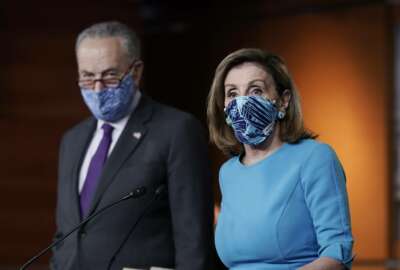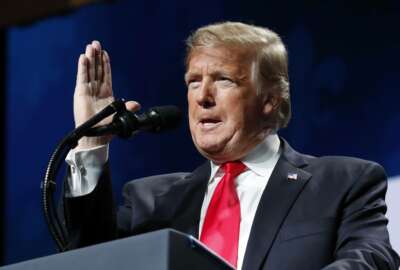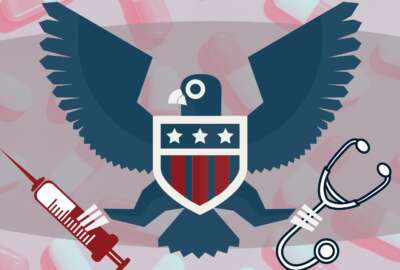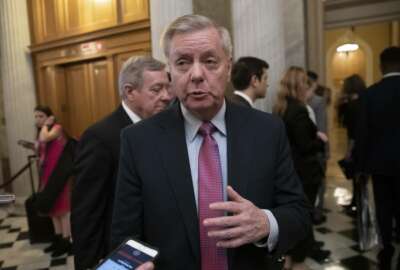OMB tells agencies to start planning for possible government shutdown
It's customary for the Office of Management and Budget to engage with agencies on planning seven days before any government shutdown deadline. OMB said it's con...
With the threat of a government shutdown just seven days away, the White House is formally urging federal agencies to prepare for the possibility of a lapse in appropriations next week.
“We fully expect Congress to work in a bipartisan fashion to keep our government open, get disaster relief to the Americans who need it, and avoid a catastrophic default, especially as we continue to confront the pandemic and power an economic recovery,” Abdullah Hasan, spokesman for the Office of Management and Budget, said Thursday in a statement. “In the meantime, prudent management requires that the government plan for the possibility of a lapse in funding.”
It is customary for OMB to meet with agencies about government shutdown planning seven days before a lapse in appropriations, regardless of the year or the particular circumstances in Congress.
The House on Tuesday cleared a nine-week continuing resolution that would keep agencies running through Dec. 3, but the legislation faces an uphill battle in the Senate. Republicans have said they won’t support a continuing resolution that includes a debt limit suspension, which the House proposal does.
Congressional leaders from both parties have said they have no interest in a government shutdown, but it’s still unclear what path they’ll pursue to avoid a lapse in appropriations before next Thursday’s deadline.
“Consistent with longstanding practice across multiple administrations, OMB is preparing for any contingency, and determinations about specific programs are being actively reviewed by agencies,” Hasan added. “More importantly, there is enough time for Congress to prevent a lapse in appropriations, and we are confident they will do so.”
As of Thursday afternoon, 12 agencies had updated their shutdown contingency plans in 2021, including seven this month.
Most contingency plans include an estimate of the number of employees who will be “excepted” from furlough or considered “essential” should a lapse in appropriations occur.
Those plans change year after year as agencies reassess what resources and personnel are necessary to perform activities required by law or necessary to protect life and property, as the Antideficiency Act allows. Employees who receive their compensation from another source other than annual appropriations are also usually excepted from furlough.
At the Treasury Department’s IRS, for example, a total of 32,155 employees are excepted from furlough, a number that sharply increases if a government shutdown coincides with tax filing season, according to the agency’s plan.
The Justice Department would retain the majority of its workforce; some 85%, or 98,629 of its 116,126-person workforce are excepted employees, according to the agency.
The Smithsonian Institution would retain 888 excepted employees, about 22% of its workforce, according to the agency’s contingency plan. Those employees would care for National Zoo animals and secure museum buildings, which the agency said it would have to close to the public.
Most health care professionals at the Department of Veterans Affairs, airport screeners at the Transportation Security Administration and active-duty military members would continue to work — without pay — during a government shutdown.
Should the government shut down, federal workers — both excepted employees working through the lapse and those who are furloughed — will eventually get paid.
Congress customarily passes legislation giving federal workers retroactive back pay once the lapse in appropriations ends.
But in the the middle of the most recent government shutdown, former President Donald Trump signed the Government Employee Fair Treatment Act into law, which guaranteed back pay to furloughed and excepted federal workers impacted by the 2018-2019 partial shutdown — and any subsequent lapse in appropriations that followed.
Theoretically that law would ensure federal workers receive retroactive back pay in an upcoming government shutdown, should one occur. It does not, however, apply to federal contractors.
The 2018-2019 partial government shutdown impacted about 800,000 federal workers, and it was the longest in U.S. history. The 35-day lapse cost the U.S. economy about $11 billion, including a permanent loss of $3 billion, according to the Congressional Budget Office.
That shutdown also delayed about $18 billion in federal discretionary spending for compensation, goods and services, and suspended other federal services, CBO said.
Agencies have experienced 21 different government shutdowns of a day or longer since the Carter administration, according to the Partnership for Public Service.
The last shutdown that impacted the entire government, including the Defense Department, occurred in 2013. Federal employees were furloughed for a combined total of 6.6 million days, according to a November 2013 report from the Obama administration.
Because the workforce eventually received back pay, the government ultimately paid nearly $2 billion to furloughed federal employees for services they ultimately never provided during the 16-day shutdown, OMB said at the time.
Copyright © 2024 Federal News Network. All rights reserved. This website is not intended for users located within the European Economic Area.
Nicole Ogrysko is a reporter for Federal News Network focusing on the federal workforce and federal pay and benefits.
Follow @nogryskoWFED







